Japan’s ancient capital (pre-Tokyo, pre-Kyoto) Nara was memorable for two things – its abundance of beautiful temples, and the deer that roam Nara Park and the surrounding streets.
The city, which is home to eight UNESCO World Heritage Sites, lies to the east of Osaka and is only an hour away by train.
On my sister’s recommendation, we spent a day there – and it proved to be a fantastic trip!

On arriving in Nara, we set off for Heijo Palace on the outskirts of the city.
The imperial site was built at the turn of the 8th century to house the emperor and his court, but it fell to ruin and its remains were only excavated in the 1970s.
Today the site, which was named a UNESCO World Heritage Site in 1998, is surrounded by fields and has a rural feel to it.
We made our way to the formal audience hall (above), which was rebuilt and opened to the public in 2010, passing fields and imperial archaeological sites along the way.
It was quite a trek from the train station. But the hall, sitting by itself in a large plot of desolate land (above), looked imposing and was worth the time it took to get there.

On stepping inside, my eye was drawn to a big throne in the centre of the room and I made my way over to have a closer look.
While I was absorbed by the throne and the various information panels, one of the guards drew my attention to the elegant painted animals along the ceiling (above).
The paintings represent the 12 animals from the lunar calendar, as well as the animals of the points of the compass.
They were lovely and I’m not sure I would have noticed them had the guard not pointed them out, so I was very grateful to him for doing so!
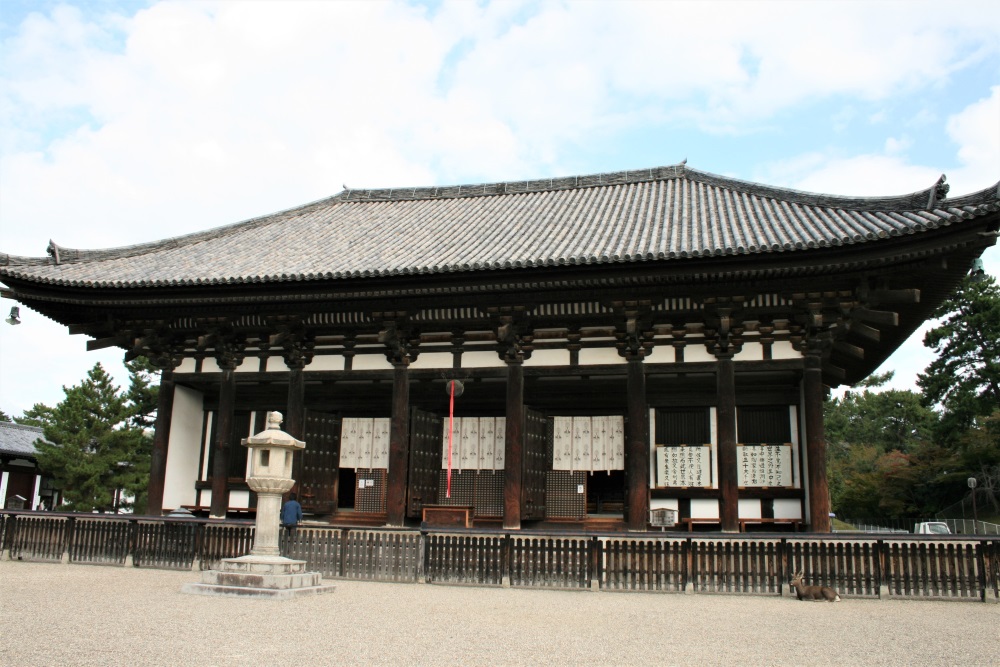
After the palace, we headed back towards the city centre to visit some temples.
The first of which was Kohfuku-ji Temple, a temple complex home to a series of buildings, including two pagodas, the National Treasure Museum and the Eastern Golden Hall.
We didn’t have a great deal of time to see everything at the temple complex, but we made sure to have a look inside the Eastern Golden Hall (above).
The hall is next to a towering five-storey pagoda (it’s the second tallest in Japan), where we admired some magnificent wooden statues.
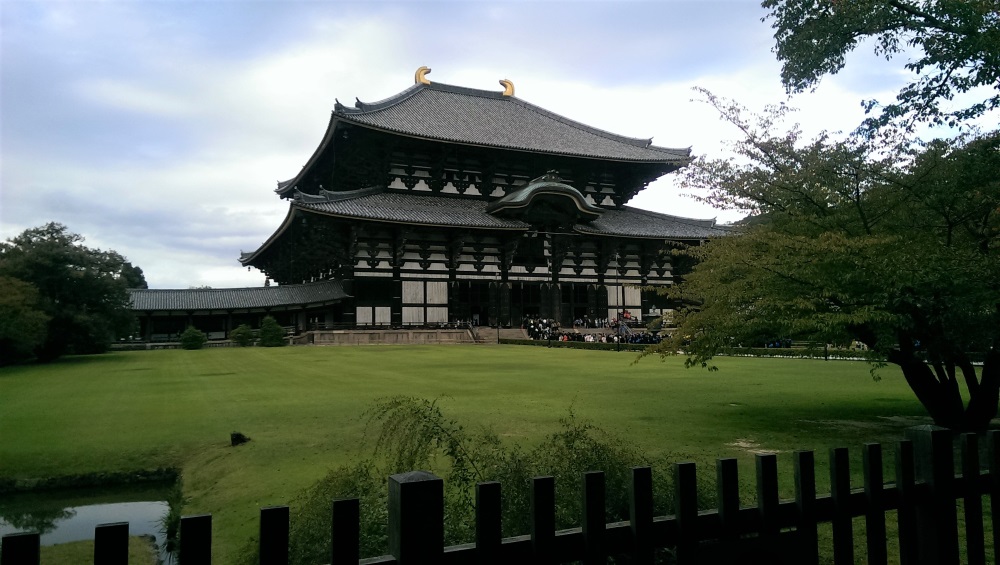
Then it was on to Todai-ji Temple. The temple complex was incredibly busy and there were far more people here than in any of the other sites we visited.
It was originally built in 752AD and its main hall, Daibutsuden (above), was fabulous. It’s said to be the largest wooden building in the world.
From the outside, the building was beautiful, but on stepping inside, we realised it was home to a far more spectacular site – a series of colossal Buddhist statues.
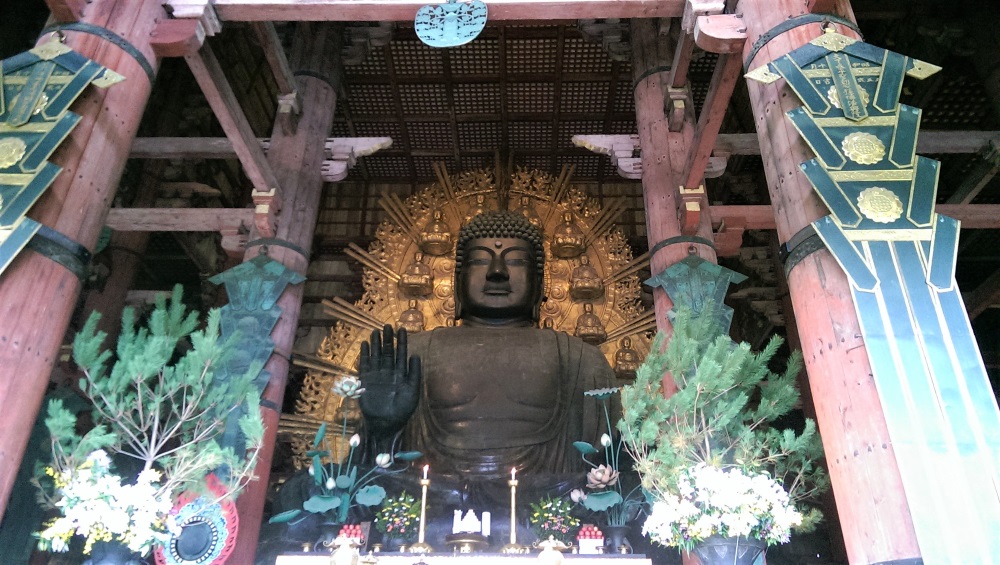
The enormous statues sat just inside the hall and consisted of the great Daibutsu (aka Buddha, above) in the centre, with two Bodhisattvas on either side.
The bronze statues were mesmerising and I found it hard to take my eyes off them.
Eventually, I peeled myself away to tour the rest of the hall, which is also home to wooden models of the temple complex and more ginormous Buddhist statues.
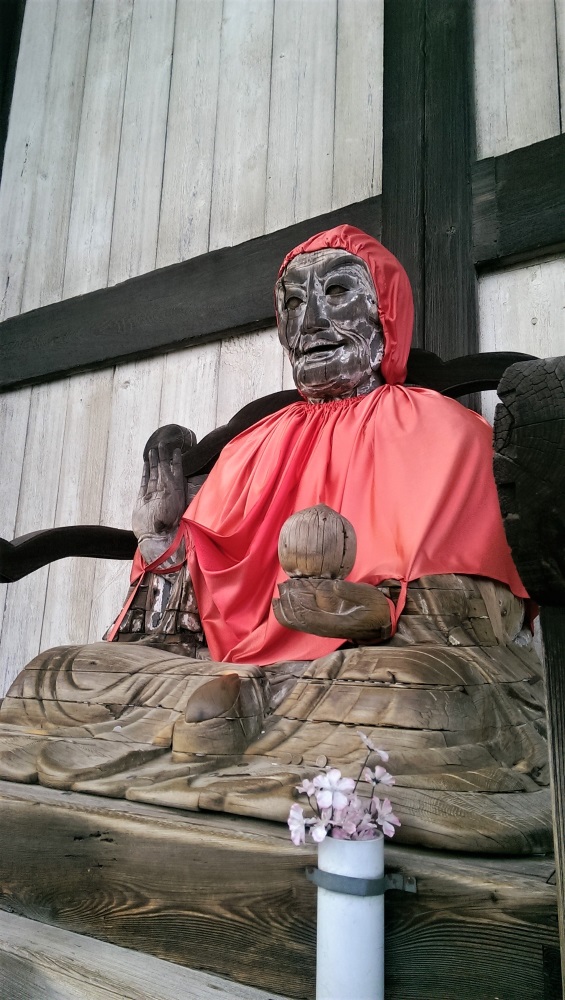
On leaving the great hall, I spotted another fascinating sight, a wooden statue clad in a red cape (above).
The statue, Binzuru, is said to help with healing and as I stood admiring it, various people came up and rubbed parts of it.
According to the custom, those suffering with an ailment will be cured if they rub the corresponding body part on Binzuru.
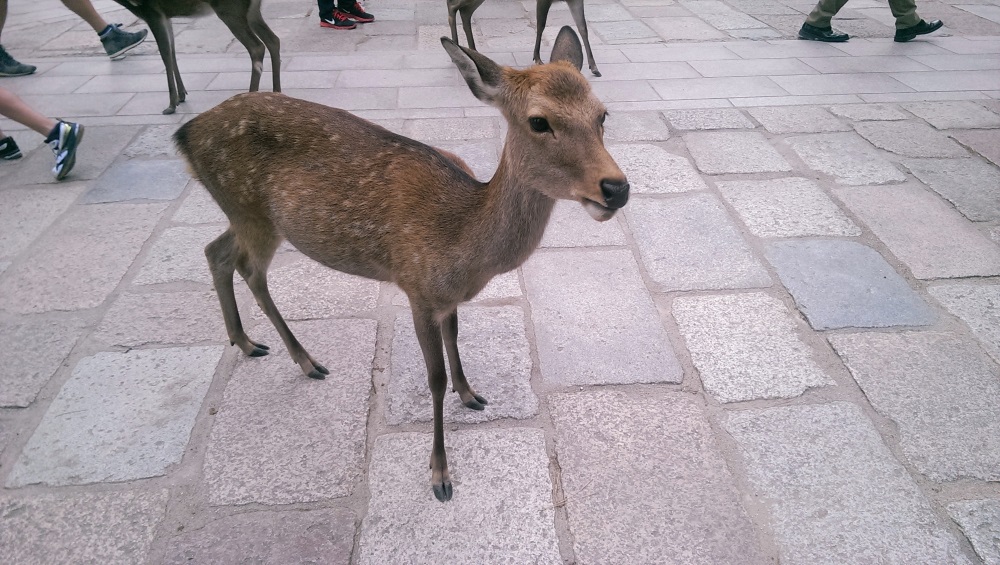
My favourite part of Nara wasn’t the many astonishing temples or the remains of the imperial palace, but the herds of deer that roam the city’s streets.
The tame, yet assertive, animals roam Nara Park and the surrounding area, and there are even road signs to warn traffic about them.
The deer were clearly used to tourists and would brazenly come up to us in the hope of being fed deer crackers, which were being sold by nearby vendors.
I even saw a few deer nipping at people in a desperate bid to get the crackers they were holding.
It’s the only place in the world I’ve seen deer roaming city streets and that are so comfortable around people.
The deer I’ve come across in places like Richmond Park in London usually keep their distance, but these ones were super friendly (probably on account of the ubiquitous deer crackers).
Nara’s a wonderful city with many beautiful and interesting buildings to explore, not to mention the novel sight of deer wandering the streets.
We only spent a day in Nara, but there was lots we didn’t see and I could easily have spent another full day exploring the city.
Definitely worth a trip if you’re in the Osaka or Kyoto area!






